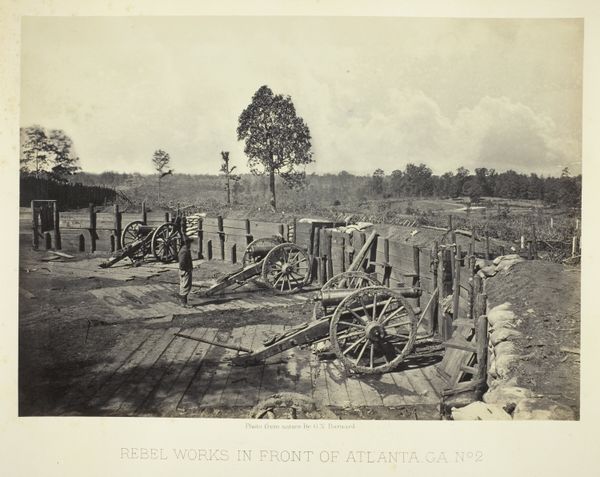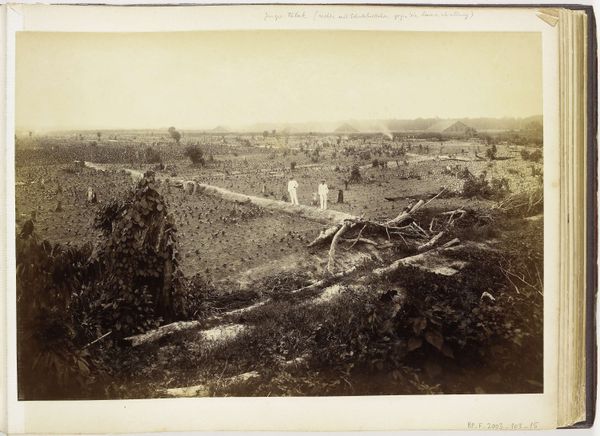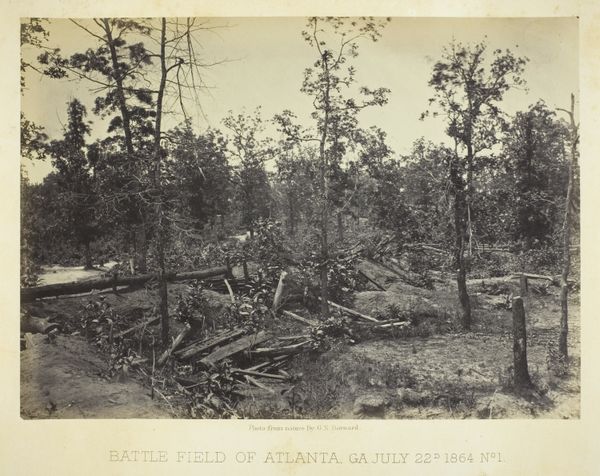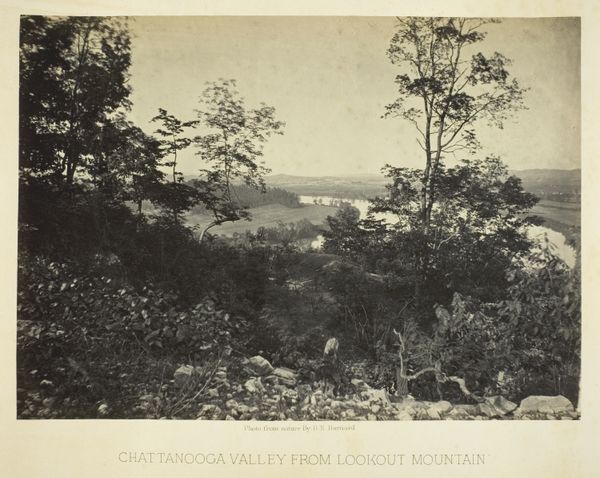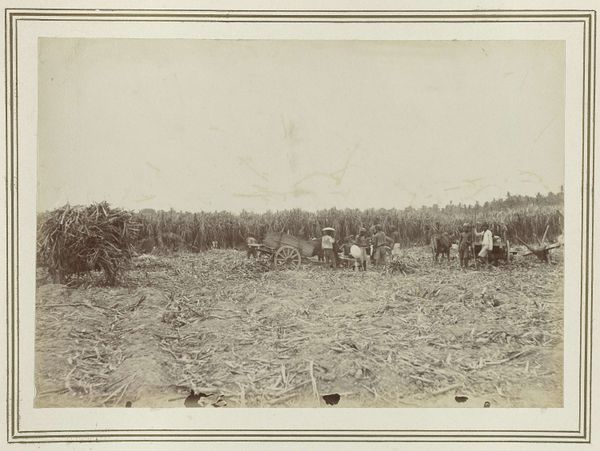
print, photography, gelatin-silver-print
# print
#
landscape
#
photography
#
gelatin-silver-print
#
history-painting
Dimensions: 25.5 × 35.9 cm (image/paper); 41 × 50.8 cm (album page)
Copyright: Public Domain
Curator: I find myself immediately drawn to the bleakness. A landscape rendered in somber tones, where even the trees seem to reach out like skeletal fingers. Editor: That subdued atmosphere certainly echoes the desolation that marked the aftermath of the American Civil War. This is George N. Barnard’s “View of Kenesaw Mountain, Ga.,” a gelatin-silver print made in 1866, now held at the Art Institute of Chicago. It's so much more than a landscape. It's a document. Curator: The presence of the wooden fence adds a fascinating layer. The rough, unfinished barricade cutting horizontally across the frame acts as an imperfect symbolic division between our present, and the history the land carries. Do you read it as barrier, or as boundary? Editor: I interpret it more as a stark reminder of fractured territories and the enduring impact of conflict, but also speaks to resilience and rebuilding—both physical and social. It is striking how Barnard uses the then relatively new medium of photography to show us history being made, to tell this chapter in the American story. Curator: Indeed. Photography granted a kind of hyper-realism never previously achieved. It cemented itself as an irrefutable visual witness of collective experience, for a population struggling to come to terms with so much trauma. The trees themselves are fascinating—their bare branches silhouetted against a sky, almost like shattered nerves reaching skyward. Editor: Absolutely. Barnard’s work is poignant because he is grappling with these broader themes of loss and reconciliation in the face of a divided nation, yet what endures beyond that moment, are these very specific symbols. Kenesaw Mountain functions here, not as geographical feature, but a monument to memory. Curator: Well said. This image reminds me that even within stillness, profound stories are etched onto the landscape. The emotional echoes of a troubled era become permanently marked through image, and can therefore continue to teach us. Editor: And I agree. By showing us a landscape so obviously impacted by violent actions, this becomes more than an account of war, but a testament to how these histories become embedded in the everyday spaces we occupy.
Comments
No comments
Be the first to comment and join the conversation on the ultimate creative platform.


